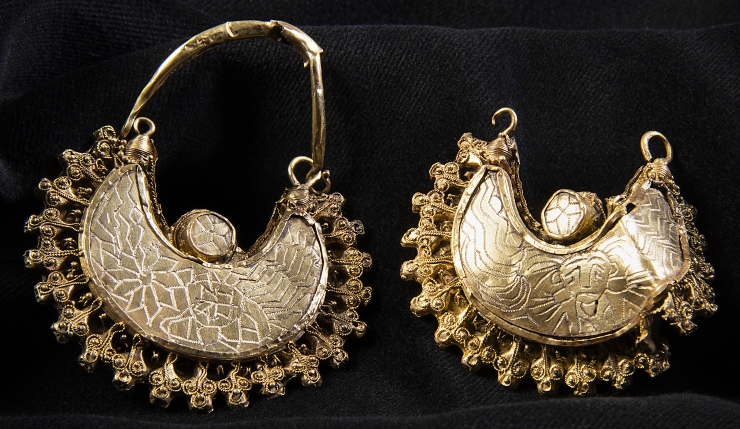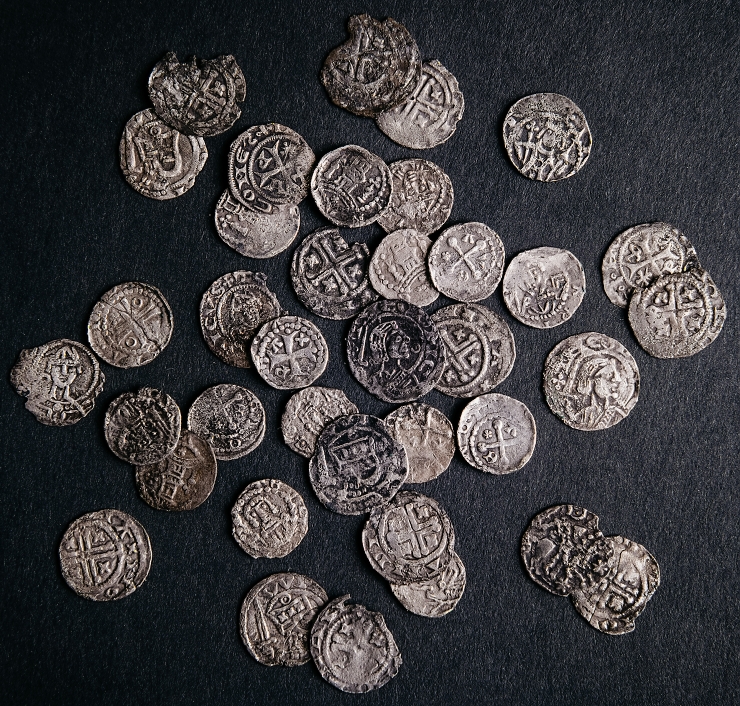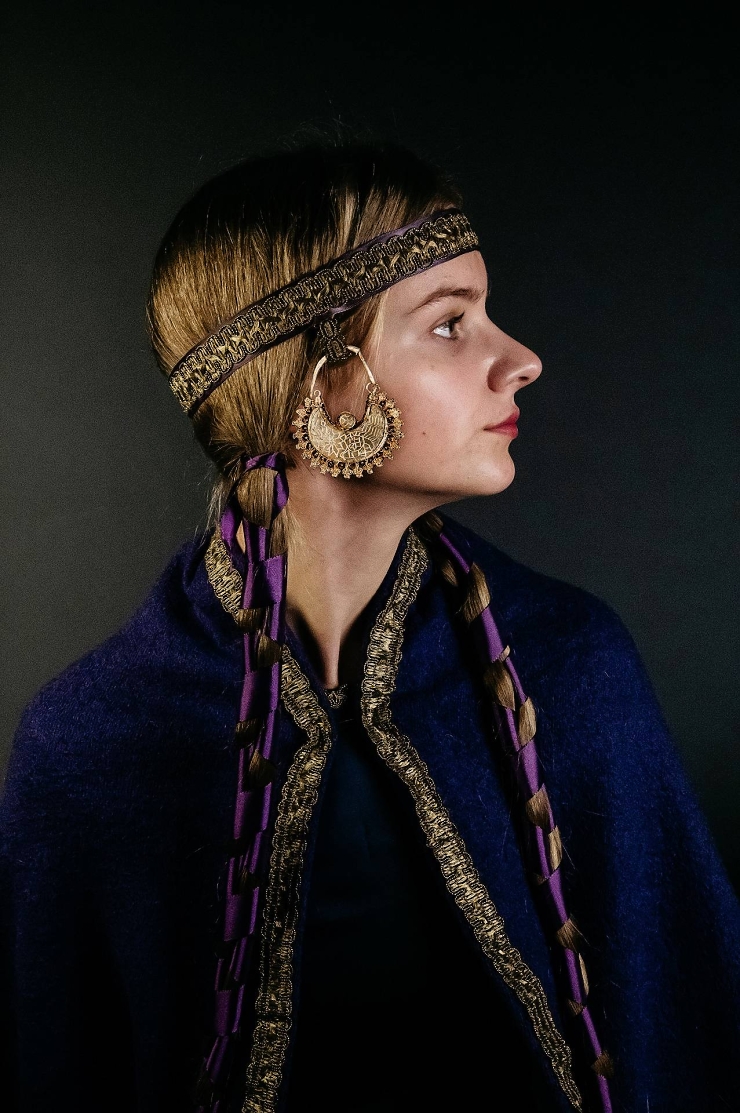
Detectorist finds unique treasure with gold earrings from the 11th century
Categories: Nálezy nejenom s detektorem v západní Evropě
The Dutch National Museum of Antiquities (Rijksmuseum van Oudheden) has unveiled a unique treasure, the beautifulmedieval gold jewellery and silver coins discovered in 2021 by historian and detectorist Lorenzo Ruijter. After notifying the regional heritage authorities, he had to keep the discovery secret for two years before the collection was cleaned and conserved and his sensational find could be presented to the public.
The treasure consists of four gold earrings, gold leaf and 39 silver coins. The coins date from 1200 to 1248, so the treasure was deposited no earlier than the mid-13th century. However, the jewels were already at least 200 years old at the time of their deposition, probably having been handed down from mother to daughter over eight generations. As gold jewellery from the High Middle Ages is extremely rare in the Netherlands, these four earrings from the 11th century represent the most important artefacts of the hoard.
The crescent-shaped gold earrings are about 5 cm wide and were originally hung on a decorative headband around the head. Two decorative pendants bear intricate filigree decoration. The remaining pendants are covered with engraved decorative scenes. One has been damaged (probably by agricultural activity) and bears a floral motif. The other depicts a male figure with his head surrounded by glowing lines in a representation of Christ as Sol Invictus. So far, only three other earrings of this type have been found in the Netherlands.
The 39 silver coins come from the Netherlands, the diocese of Utrecht and from what is now Germany. Traces of fabric found on the coins suggest that they were originally stored in a bag or wrapped in cloth. The most recent mintages date from 1247 and 1248, when William II of Austria was the king. The Dutch were elected King of Germany after the excommunication of Frederick II - Emperor of the Holy Roman Empire by Pope Innocent IV.
William died in 1256 in Hoogwoud, where the treasure was found. He was then leading one of several war expeditions against the West Frisians when he and his horse fell through the thin ice into a frozen lake. He was killed in the water by Frisian soldiers and secretly buried under the floor of a local house. 26 years later, his body was discovered by his son Floris V. Dutch, and buried him with full honours in Middelburg.
Regardless of whether it is directly related to this event, according to experts, the collection is a treasure of national importance. It will be on display at the museum until mid-June this year, and in October it will become part of the "Year 1000" exhibition for six months. However, these are temporary loans, the treasure is still the property of the finder.
Roman Němec
Sources: portable-antiquities.nl, rmo.nl







reconstruction of the attachment and the way of carrying
The article is included in categories:






